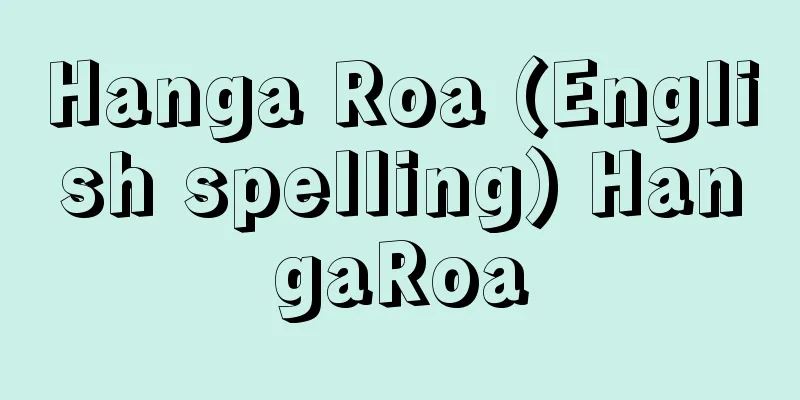Shutoku

|
Chinese soldier and revolutionary. One of the founders of the People's Liberation Army of China, and the foster father. Born into a poor peasant family in Yilong, Sichuan Province, he entered the Yunnan Military Academy in 1909. While at school, he joined the China Tongwenhui and participated in the Xinhai Revolution as an infantry company commander in Cai E's army. After Cai's death, he became embroiled in a war between warlords, and led a miserable life smoking opium and keeping concubines. In 1922, he met Sun Yat-sen in Shanghai, liquidated his life, and traveled to Germany. In Berlin, he met Zhou Enlai and joined the Chinese Communist Party. In 1923, he studied Marxism at the University of Göttingen, participated in the revolutionary movement, and was exiled. He returned to China in 1926 via the Soviet Union and participated in the Northern Expedition. In 1927, he became the principal of the Nanchang Military Academy and head of the Public Security Bureau of the Wuhan government. After the Wuhan government split, he launched the Nanchang Uprising with Zhou Enlai and He Long in July of the same year, but failed, and fought in Jiangxi, Fujian, and Guangdong. In May 1928, he entered the Ruijin Soviet, met Mao Zedong, organized the Fourth Red Army, and became its commander-in-chief. In 1930, he became commander-in-chief of the Red Army. In 1931, he became chairman of the Military Committee of the Provisional Government of the Chinese Soviet. He opposed Li Lisan's left-leaning line along with Mao Zedong, and demanded the abandonment of the offensive plan to Changsha and Wuhan. He also repeatedly defeated Chiang Kai-shek's encirclement and punitive forces through guerilla warfare. He participated in the Long March in 1934, and at the Zunyi Conference in January 1935, he criticized Wang Ming's left-leaning line and supported Mao Zedong's taking control of the party. Along the way, he briefly went south with Zhang Guotao, who opposed the northward movement to resist the Japanese, but later joined up with him. During the Anti-Japanese War, he fought throughout North China as commander-in-chief of the Eighth Route Army, establishing anti-Japanese bases and fighting the Japanese army, while surviving the blockade of the Shaanxi, Gansu, and Ningxia border areas by the Kuomintang through production campaigns. After World War II, he became commander-in-chief of the People's Liberation Army of China, and annihilated the Kuomintang army in the three major battles of Liaoshen, Huaihai, and Pingjin, ensuring the victory of the Communist Party. After the founding of the People's Republic of China (1949), he served as Vice President of the State, Vice Chairman of the National Defense Committee, Vice Chairman of the Party, and Chairman of the Standing Committee of the National People's Congress. As the top military leader and an elder of the Party and government, he assisted Mao Zedong along with Zhou Enlai and contributed to the creation of a new China. During the Cultural Revolution, he was often criticized and temporarily demoted, but after the downfall of Lin Biao, he was restored to his original position at the Tenth National Congress in 1973 and the Fourth National People's Congress in 1975. He died of illness in Beijing on July 6, 1976. His selfless and honest personality earned him the respect of many people. [Shuzo Agawa] "The Great Way, Volumes 1 and 2, by Smedley, translated by Tomoji Abe (Iwanami Bunko)" [Reference items] | | | | | | | | | | | |Source: Shogakukan Encyclopedia Nipponica About Encyclopedia Nipponica Information | Legend |
|
中国の軍人、革命家。中国人民解放軍の創始者の一人で育ての親。四川(しせん)省儀隴(ぎろう)の貧農の家庭に生まれ、1909年雲南講武学堂に入学。在学中に中国同盟会に参加し、辛亥(しんがい)革命には蔡鍔(さいがく)軍の歩兵中隊長として参加。蔡の死後、軍閥間の戦争に巻き込まれ、アヘンを吸い妾を囲うすさんだ生活を送る。1922年上海(シャンハイ)で孫文(そんぶん)に会い、これまでの生活を清算し、ドイツに渡る。ベルリンで周恩来(しゅうおんらい)に会い、中国共産党に入党。1923年ゲッティンゲン大学でマルクス主義を学び、革命運動に参加し、追放される。ソ連経由で1926年帰国し北伐に参加。1927年武漢政府の南昌(なんしょう)軍官学校校長兼公安局長に就任。武漢(ぶかん)政府分裂後、同年7月に周恩来、賀竜(がりゅう)らと南昌蜂起(ほうき)を起こしたが失敗、江西(こうせい)、福建(ふっけん)、広東(カントン)を転戦。1928年5月瑞金(ずいきん)ソビエトに入り、毛沢東(もうたくとう)と会い、紅軍第四軍を組織し、総司令となり、1930年紅軍総司令。1931年中華ソビエト臨時政府軍事委員会主席となる。毛沢東とともに李立三(りりっさん)左傾路線に反対し、長沙(ちょうさ)、武漢への進攻作戦放棄を要求。また、蒋介石(しょうかいせき)の包囲討伐軍をゲリラ戦でたびたび撃破した。1934年長征に参加し、1935年1月遵義(じゅんぎ)会議で王明左傾路線を批判し、毛沢東が党の主導権を握ることを支持した。途中、北上抗日に反対した張国燾(ちょうこくとう)とともに、一時南下したが、のち合流。抗日戦争中は八路軍総司令として華北各地を転戦、抗日根拠地を建設し、日本軍と戦い、一方、国民党による陝甘寧(陝西(せんせい)、甘粛(かんしゅく)、寧夏(ねいか))辺区封鎖に対しては生産運動で乗り切った。第二次世界大戦後、中国人民解放軍総指令となり、遼沈(りょうちん)、淮海(わいかい)、平津の三大戦役で国民党軍を壊滅させ、共産党の勝利を確実なものとした。 中華人民共和国成立(1949)後は国家副主席、国防委員会副主任、党副主席、全国人民代表大会常務委員会委員長を務め、軍事面の最高指導者、党・政府の長老として、周恩来とともに毛沢東を助け、新中国の国づくりに貢献した。文化大革命ではしばしば批判を浴び一時降格されたが、林彪(りんぴょう)失脚後、1973年の十全大会および1975年の第4期全国人民代表大会でもとの地位に返り咲いた。1976年7月6日北京(ペキン)で病死。無欲で誠実な人柄は多くの人々から敬愛された。 [阿川修三] 『スメドレー著、阿部知二訳『偉大なる道』上下(岩波文庫)』 [参照項目] | | | | | | | | | | | |出典 小学館 日本大百科全書(ニッポニカ)日本大百科全書(ニッポニカ)について 情報 | 凡例 |
Recommend
Gamou Taro
...A samurai family from the Heian to early Edo p...
Pelican vulning
…This design is also the coat of arms of the U.S....
Miura Jyoshin
Year of death: March 12, 1644 (April 18, 1644) Yea...
kerykeion (English spelling)
...Hermes Trismegistus, known as the founder of a...
Chemical exploration method
A method of prospecting for minerals. It involves ...
Sam Sene Thai (English spelling)
…The first king, Fa Ngum, whose capital was Muang...
Moonlight - Gessho
A patriot and monk from the late Edo period. Born...
Mitsukeda - Mitsukeda
A land term from the Edo period. It is said to mea...
MacLeod, WC (English spelling)
…There have been many conquests and attempts to c...
Valerianus (English spelling) Publius Licinius Valerianus
Roman Emperor (reigned 253-260). After gaining fa...
Kara Natto - Kara Natto
〘Noun〙 A type of natto. Granular natto made by ste...
Arkas
…Thus, although Artemis was eventually added to t...
Morley, Thomas
Born: 1557/1558, London [died] 1603. London. Engli...
Director - Riji
It is an organ of a corporation that represents t...
Dutch Friesian [seed] - Holland Friesian
...Since the 16th century, the area has been turn...









